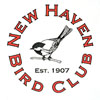Rhode Island Coast Field Trip Report
February 27, 2016
We had a very good day. Twenty-five birders strong, our resolute group invaded the state to our east for a full day of birding. We started our day at Beavertail State Park in Jamestown. It was seasonably cold, but pleasantly calm and clear, and there were lots of birds. Most notably, there were several Razorbills just off the point at the south end of the park. We saw two or three at a time as they rested on the water’s surface or dove in their characteristic way into its depths. We also got great looks at an adult Iceland Gull on the rocky shore. All the while, we were being serenaded by the whistling calls of the numerous Black Scoters that were there, along with Common Eider, Surf Scoters, and the spectacular Harlequin Ducks. We also saw Common and Red-throated Loon, Great Cormorants, and Horned Grebes. Our next stop was Easton Pond in Newport. We saw Lesser Scaup, all three merganser species, a Ruddy Duck, a Kingfisher, and a drake Canvasback there. Then we went to the Sachuest Point National Wildlife Refuge in Middletown. There, perched on a log by the shore, was a Snowy Owl. It seemed undisturbed by our presence (it must be used to people gawking at it) and we noted that it was fitted with a radio tag attached to its back. There were more scoter, eider, and Harlequin Ducks there. A brief stop at nearby Third Beach netted a flock of Sanderlings. Then it was time for us to head west along the coast. Some of us were lucky to see a Northern Gannet as it flew past the bridge that connects Jamestown to Narragansett (others kept their eyes on the road). We stopped at Moonstone Beach and walked the beach to the south end of Trustom Pond (the trip leader makes us take this trek every year) where we saw Greater Scaup, Ruddy Ducks, Great Cormorants, and a wintering Double-crested Cormorant. From a distance, we spotted a Northern Harrier, two Common Ravens, and a Red-tailed Hawk flying over the fields and marsh. To our dismay, we found a dead seal pup washed up on the beach. Life and death are always intermingled. Our next destination was the Burlingame Park campgrounds area, but a locked gate thwarted our efforts to see the Red-headed Woodpecker that had been seen there. So, we went to Ninigret Park instead where we saw our old friend the Lesser Black-backed Gull (it’s been wintering there for several years) as well as a first-year male White-winged Scoter, close to shore. Our final stop was the Weekapaug Marsh. It was quiet there, but as the sun was setting behind us, we saw four Great Blue Heron bedding down for the night. It was time for us to head off into the sunset, too, satisfied that we had succeeded in our quest. We saw a total of 62 species of birds. Not bad, for a group of out-of-state birders. We’ll be back again next year, to see if we can conquer our neighbors again. J
Chris Loscalzo
